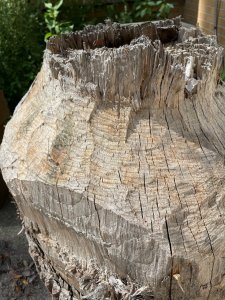Beavers: Stories of Success
July 12, 2023
Erin Parker, Interpretive Services Supervisor
One of the most incredible success stories of wildlife population recovery in the Great Lakes is that of the American Beaver (Castor canadensis). Beavers, the largest rodents in North America, were once extirpated (locally extinct) from southeast Michigan because of the combined pressures of hunting and trapping, habitat destruction, and contamination of their freshwater habitats due to industrialization.
More than 130 years after the last beaver was observed in the Detroit area in 1877, signs of beaver were observed along the Rouge. The first beavers returned to the area in 2008. Today, beaver populations have soared and beavers can be found within many Metroparks and even in cities like Detroit with beavers living on Belle Isle and even the Detroit Riverfront!
How did beavers go from absent to flourishing? Many factors come into play in this success story.

Beaver biology
Beavers are big, much bigger than most people think! They can be 3 feet long from the tip of their nose to the tip of their flat, paddle-shaped tail and adults typically weigh between 40-70 pounds. They are nocturnal, and so human visitors usually only see the signs they leave behind, including cut tree stumps and their lodges. Beavers use their huge teeth to chip away at (and eventually cut down!) trees, all so that they can reach the tender buds and leaves on the tips of the tall branches. This is a good strategy for an animal that can’t climb to get its preferred food source! Beavers prefer aspens, willow, birch, alder, and other hardwoods. They mostly avoid conifers’ spiky needles.
As woodland habitats regrow along our post-industrial waterways and communities develop green spaces, they provide food and habitat for beavers and other wildlife. They mostly avoid conifers. At Lake St. Clair Metropark, beavers have helped themselves to huge cottonwood trees which took several nights to cut down!

Beavers are related to the much smaller muskrat (Ondatra zibethicus) which max out at about 4 pounds. Muskrats have long, slender tails and primarily consume plant roots such as cattails in our marshes and pond-edges. They have strong digging claws and spend time in burrows dug into the soft edges of waterways. They can frequently be seen swimming while carrying plant material and sitting at the water’s edge, eating cattails and grooming. Like beavers, muskrats need to keep their fur in great condition and well-oiled to keep insulated while swimming in cold Great Lakes waters.
Water quality = quality of life
One factor that contributed to the return of beavers throughout the Great Lakes has been improvements in water quality through regulation of clean water. Southeast Michigan’s busy industrial cities utilized waterways like the Detroit and Rouge Rivers to move materials and to get rid of waste products. Unfortunately, all those pollutants cause big problems for animals such as the beaver. As oily products spread on the surface of the water, they are captured by the long waterproof outer layer of the beaver’s coat and gum up that critical part of their insulation. As our waterways were cleaned, cleared, and protected, it opened up opportunities for the beavers to start coming back.
Beaver believers
While beavers are becoming relatively common, they still remain difficult to see. The best time of day to watch beavers in action is at dawn and dusk, when they are actively patrolling the waters that protect their dens and lodges. Trail cameras, placed strategically near trees that show telltale signs of beaver teeth, can also capture these elusive animals. Parks such as Indian Springs, Lake St. Clair, Stony Creek, and Oakwoods all have active beaver populations. While we may not see the animals themselves, their lodges, dens, and cut tree stumps show their busy work.
Stay tuned
Not everyone is excited to share their favorite trees with beavers and may find some of their habits, such as damming up moving water, a nuisance. How do we relearn to co-exist with beavers when they were absent for so long? We’ll explore some ways to humanely share our spaces with beavers in a couple of weeks, look for another beaver post soon!
